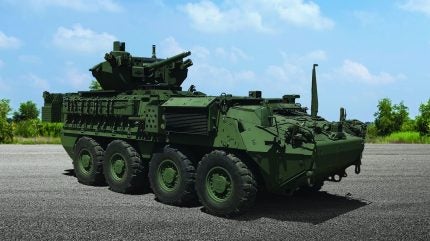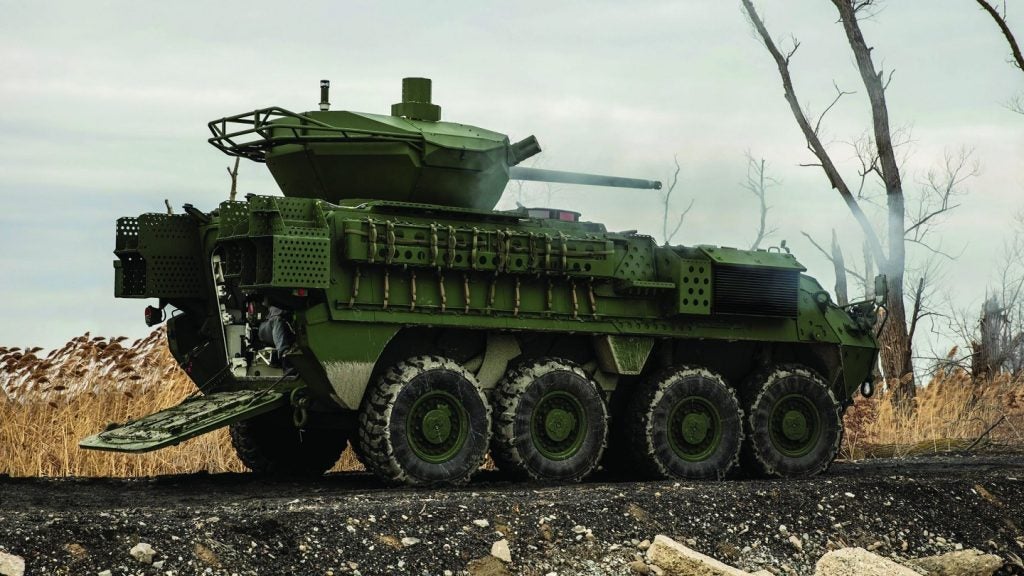
The US Army’s bid to upgrade the firepower of its Stryker 8×8 combat vehicle in response to increased competition from Russia resulted in hardware and software issues impacting the platform, according to a report from the US Government Accountability Office (GAO).
Published on 20 March, the GAO report states that as the US Army sought to upgrade its existing Stryker vehicles with more firepower, it did so without “fully analysing and addressing potential production risks”, resulting in issues arising during the programme.
In August 2022 Oshkosh Corporation’s subsidiary Oshkosh Defense delivered the first upgraded Stryker Double-V Hull Infantry Carrier Vehicle (ICVVA1) to the US Army, featuring the 30mm Medium Caliber Weapon System (MCWS). In June 2021, the US Army selected Oshkosh Defense and partners Pratt Miller Defense and Rafael Advanced Defense Systems to integrate the 30mm MCWS onto the Stryker ICVVA1.
Subsequent additional contracts resulted in a total programme for 269 upgraded vehicles valued at $356m, in addition to 20 vehicles for Product Verification Testing, Follow-on Operational Testing & Evaluation, and logistics development.
GAO report into US Army Stryker upgrade finds issues
The GAO report found that after the drawdown of the US Army’s armoured combat vehicles from Europe in 2013, the service assessed its fleets and determined that the Stryker brigades did not have “sufficient firepower” compared to its peer and near-peer threats. The result of this was the MCWS programme to modernise hundreds of Stryker vehicles.
According to the GAO, the US Army followed leading practices when developing requirements for the MCWS, such as using a 2018 trial with Germany-based assets to field test 83 modified Stryker platforms to “inform and refine” weapon system requirements with a view to increasing lethality, survivability, and situational awareness.
Subsequently, the US Army developed an accelerated acquisition approach for the system by placing it within the Stryker Family of Vehicles programme, rather than designating it a separate programme of record. The GAO report states this “allowed the US Army to minimise documentation required for approval”, accelerating the acquisition timeline by two years.

However, the US Army “did not fully implement leading practices for acquisition” to mitigate production risks, which were introduced, in part, by using a different turret and chassis than what was tested in Germany, the GAO found. Since production started in March 2022, the US Army found problems with the contractor’s manufacturing processes as well as software issues, the report states.
The consequences of the problems to the Stryker upgrade resulted in the US Army halting acceptance of vehicles in February 2023, after 19 had been delivered.
Presenting its recommendations, the GAO said the US Army should apply “acquisition leading practices before beginning production of future Stryker upgrades”, to which the service agreed in response.
Such acquisition practices include conducting effective production readiness reviews and ensuring that software worked as intended before ordering most, the GAO stated.




